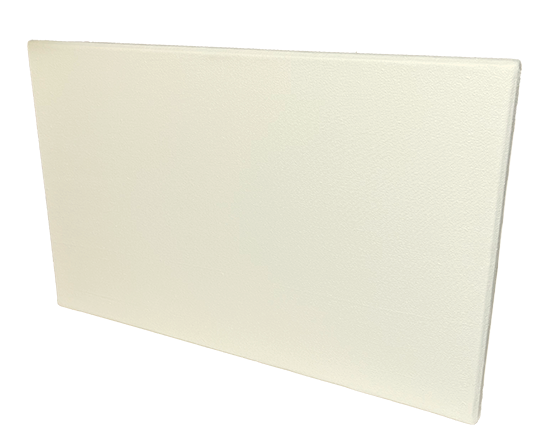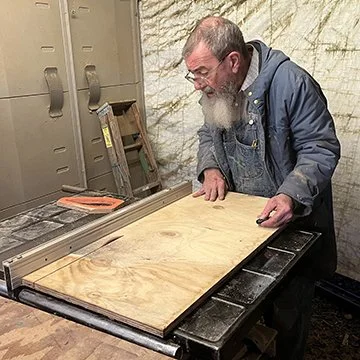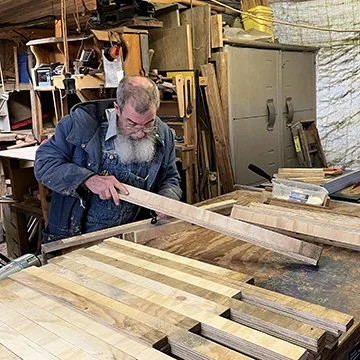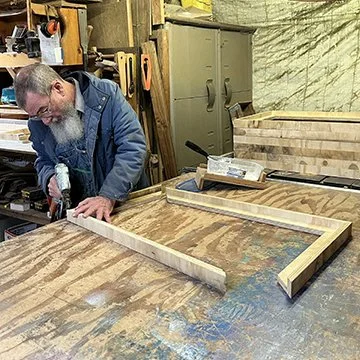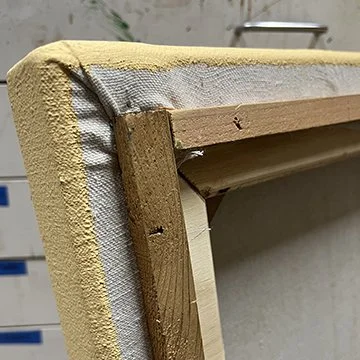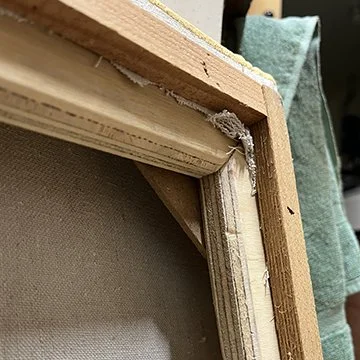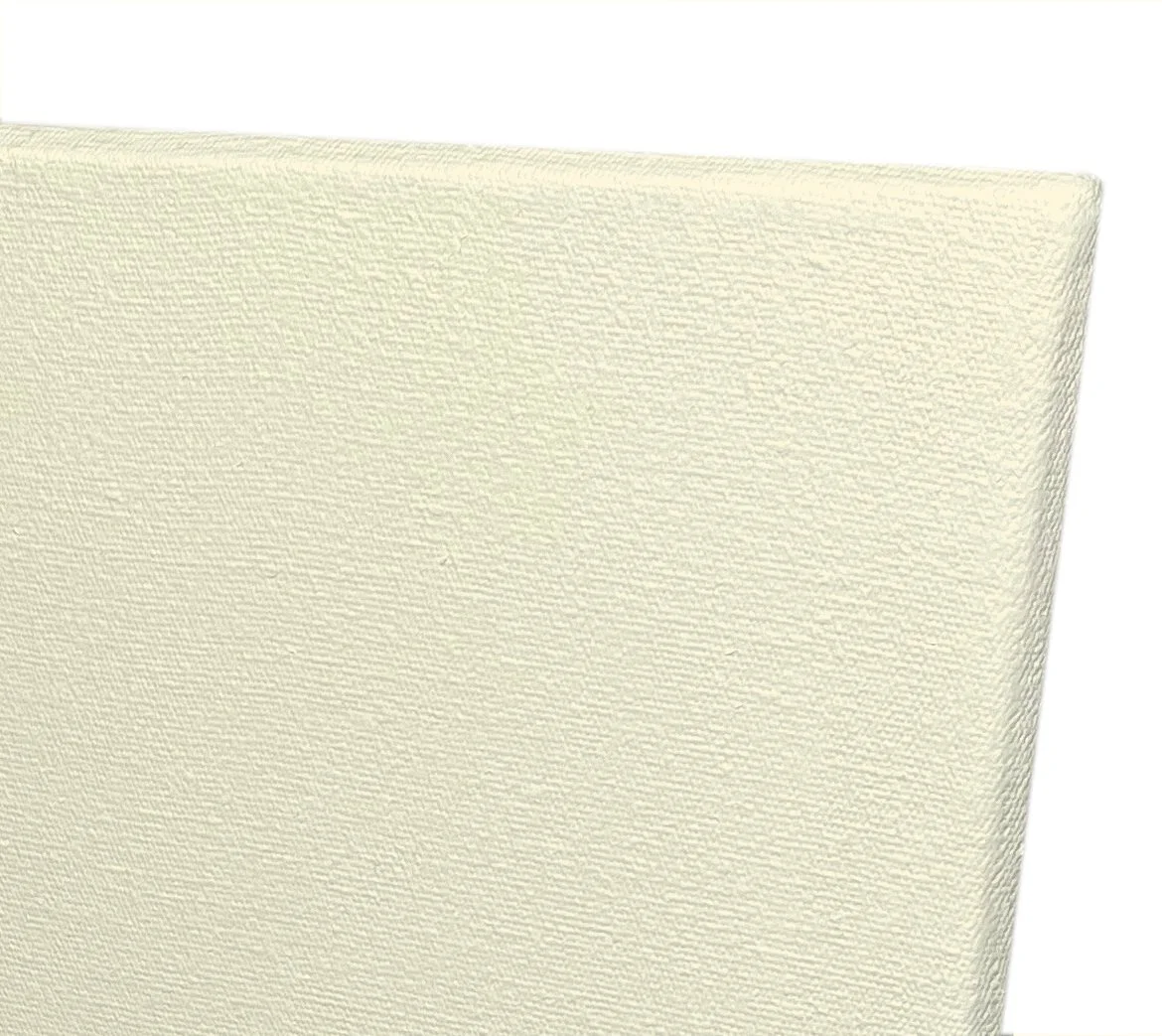Canvas: The foundation for a good painting
Out of all the mediums I have worked with, I find painting on stretched canvas to be most satisfying. Perhaps it is the slight give when the brush touches the surface, or the way the paint slides off onto the gesso.
Complete control over the process is my goal. From the building and stretching of my own canvas frames to packaging and shipping, I am totally responsible for my art.
Cutting Plywood into Strips
Commercially available artist canvas is unsuitable for my work for a number of reasons. For one thing, I want something more substantial that doesn’t require a frame for display.
Building Side Rails
Mitering Corners
Staples and Glue
Attaching Corners
Using proportions according to the classic golden mean ratio, I like to make my frames 32” x 20”.
Finishing the Frame
Stretching Canvas
Pulling Out Wrinkles
Stapling Corners
The last step in preparing my canvas is to apply several coats of my own off-white gesso recipe until I have a nice thick layer that compliments the texture of the canvas.
Applying Gesso

